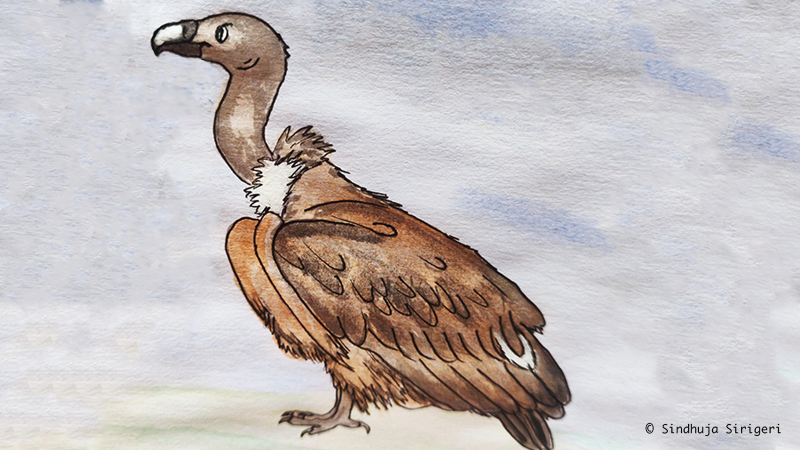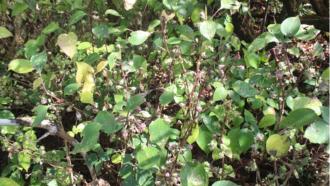
Image credits: Sindhuja Sirigeri
The white-rumped vulture (Gyps bengalensis) was once one of the most abundant raptors in the world. Over the last three decades, their numbers have drastically reduced, thanks to diclofenac poisoning. Diclofenac is a veterinary drug used for alleviating pain in dying cattle. When vultures feed on the diclofenac-injected animal carcasses, they develop gout in their internal organs and die. With steps like banning diclofenac for veterinary purposes, establishing captive breeding centres and identifying ‘vulture safe zones’, the future for these majestic scavengers look bright.
In a recent study, biologists from the Bombay Natural History Society, Mumbai, have surveyed white-rumped vultures in the Sigur plateau of Tamil Nadu and have concluded that this region could be an ideal place for a vulture sanctuary. The study, published in the Journal of Threatened Taxa, has also analysed the public perception of vultures in the area—a key criterion for conservation.
The Sigur plateau connects the Eastern and the Western Ghats and is located at the intersection of three tiger reserves—the Mudumalai Tiger Reserve, Bandipur Tiger Reserve and Sathyamangalam Tiger Reserve. It covers an area of 778.80 km, about as big as the city of Bengaluru. It has a small population of white-rumped vultures that are known to feed on wild carcasses and hence aren’t much affected by diclofenac poisoning. In this study, the researchers found out more about their numbers, breeding and feeding habits in the region between September 2011 to May 2012.
“We are monitoring the vulture population from 2011 and are continuing it in the Mudumalai Tiger Reserve. Today, the population of three residential vulture species—the white-rumped vulture, long-billed vulture and the red-headed vulture is more than 220 and counting,” says Arockianathan Samson, the lead author of the study. He is a Research Biologist at the Vulture Programme, Bombay Natural History Society, Mumbai.
The researchers counted individual vultures sighted in nesting and feeding sites during the early mornings and late evenings. They estimate that around 70–115 vultures live in this region in two colonies. They found 68 vulture nests, along the Sigur and Gundattihalla rivers, located on 41 trees. Most of them were found on the arjuna tree (Terminalia arjuna) at an average height of about 28 meters.
“The Mudumalai Tiger Reserve is planting arjuna trees along the rivers to help these vultures build more nests in the future,” says Samson. About 9 in 10 chicks found in these nests successfully hatched.
The study also found that vultures fed on about half of the carcasses found in the region. As scavengers, they play a vital role in cleaning up the dead and recycling nutrients. Interestingly, they seem to prefer the carcasses of elephants and Indian gaurs, both of which are found in the region.
Since people’s perception of these birds plays a vital role in conserving them, the researchers interviewed 109 people, including cattle holders and veterinary professionals in the adjoining villages, to gather their perspectives. About 9 in 10 respondents believed that conserving vultures was good for the ecosystem. Villagers usually disposed of the cattle carcasses into the forest about 300 to 500 meters from the village and used the vulture non-toxic drug meloxicam to treat cattle. Only four medical shops in the vicinity sold diclofenac, albeit for human consumption.
Based on these findings, the researchers suggest that the Sigur plateau is ideal as a vulture sanctuary because of its location at the confluence of three tiger reserves where the food will be in abundance for the vultures.
This article has been run past the researchers, whose work is covered, to ensure accuracy.






